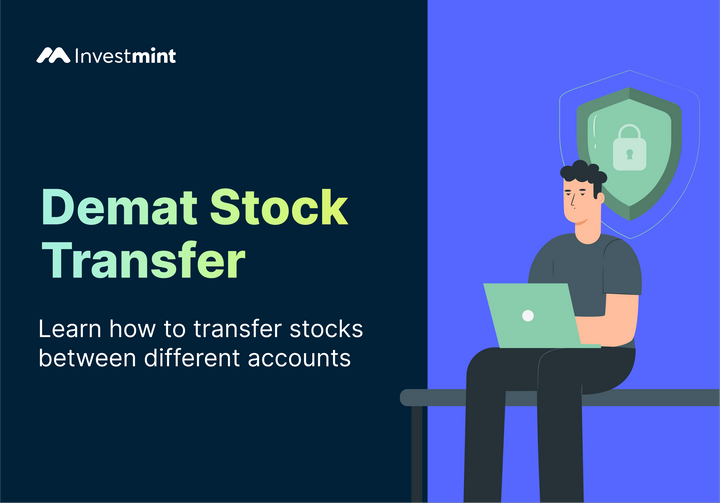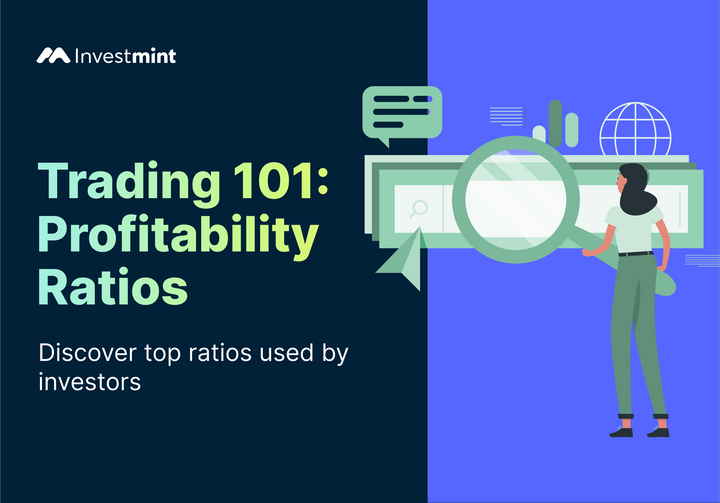What is Short Selling?

The more commonly known definition of trading is to buy low and sell high as the price of the invested stock goes up.
However, there is an entirely opposite trading style of selling high and buying low, also called short selling.
Short selling is often regarded as a complex trading strategy that involves selling stocks (which you currently don't own) and then buying them later, ideally at a lower price, to profit from the difference.
How do you sell a stock which you don't own in the first place? Will there be a time machine involved?
This article will provide a detailed guide to short selling, its mechanics, pros and cons, risks involved, and metrics used to measure its popularity. Also, we will take you through our own easy-to-understand Quick Short Model, which shorts stocks based on mean reversion.
Historical Overview
The oldest reference to short-selling dates back to the 17th century when Isaac Le Maire shorted a Dutch East India Company stock in 1609. The company traded valuable cargo across seas and was prone to capsizing due to storms.
Isaac bet on that possibility and short-sold the company's stock, believing that the ships would capsize, and thus the price of the company's stock would fall when he could buy that earlier sold stock and profit from the difference.
Why Does Short Selling Matter?
Short selling is essential for a healthy and efficient market since it allows everyone to express their views on the market's existing condition. If short selling weren't an option, the markets would have more likely gone up, thus leading to poor representation of the actual condition of the companies.
Thus, short sellers prevent market bubbles from forming and provide liquidity within the market.
Understanding Short Selling:
Basic Concept of Short Selling
As mentioned above, short selling is the complete opposite of buying first and selling later. It is a strategy in which you sell the stock first and then buy it (hopefully at a lower price).
Thus, in this strategy, you first borrow the stock from the broker and then sell it in the market with a promise of buying the stocks later, at the most by the end of the day, in spot-trading.
Mechanics of Short Selling
Let us try to understand short selling with an example. After the Hinderburg Report on Adani, you have foreseen the oncoming dip in Adani stocks. This gives you an excellent opportunity to short the stock and profit from the declining stocks.
Suppose, the next day, you short (sell) 10 stocks of Adani Enterprises, expecting them to drop in value. That is, you borrow 10 stocks of Adani Enterprises from the broker, sell it in the open market and promise the broker to buy later.
Let's assume the stock value is Rs.3,300. So the above example translates to selling 10 borrowed stocks of Adani Enterprises of Rs.33,000 value.
Now some time has passed, and you have to buy the stocks from the broker as promised earlier. The current stock price is Rs.2,100, so you buy the 10 stocks at a value of Rs.21,000 from the market, ending up with a profit of Rs.12,000, and that too in a very short time frame.
However, if the market price had gone up to Rs.3,400 instead of Rs.2,100, you would have had to buy those stocks for Rs.34,000, leading to a loss of Rs.1,000.
Short Selling vs. Buying Long
Short Selling and Buying Long are opposite strategies. In short selling, you expect the stock price to go down, so you borrow the stock, sell it, and then buy it, preferably at a lower price.
In buying long, you expect the stock to go up and thus buy at the current market price and then sell at preferably the higher price.
Key Points to Know About Short Selling:
Margin Account Requirement
You can participate in short selling only if you have enabled the Margin Trading Facility (MTF) at your broker. This facility is essential to be enabled to borrow any funds from the broker and is also required for Margin Style Trading, where users borrow funds in exchange for collateral to enter big trades. You can learn more about Margin style trading here.
Short Selling Fees and Interest
Since you are actually borrowing the funds/stocks to fund your purchase, you are liable to pay interest/flat fee to the broker, which will vary from broker to broker and hence should be checked by you before you start short selling. Besides the above, you are also liable to pay statutory and brokerage charges on the sale.
Short Squeeze Risk
Due to the strategy's nature, if the stock price moves in an upward direction, it will set you up for a loss. There might be situations in your trade when the value of the stock goes up instead of your initial assumption of it going down.
This sudden rise in the stock will lead to loss since it will force you to buy the stock at a higher price than what you initially sold for. To limit the losses, it's recommended to set an honest stop-loss in every trade.
You can also check on the metrics of short selling, like the Day to Cover Ratio and Short Interest Ratio, to check on the viability of your trade. These two are explained further below.
Pros of Short Selling:
Profit from Market Decline
Short Selling strategy allows you to keep on the profit spree even during a bearish market. So during a time of questionable surroundings like the pandemic, war, recession or industrial factors, you can decide to bet on the bearish trend and profit from the declining market.
Hedging Against Portfolio Risk
You can use this strategy to hedge against portfolio risk. You can limit your losses in long trades by balancing them out by entering the short trades in a declining market. Hence the losses incurred in the long trades (buy now, sell later) of a declining market can be offset by profits of short trades (sell now, buy later).
Generating Liquidity
Short-selling is an excellent liquidity-generating instrument for the market as it allows you to sell the shares you don't own and then buy them.
Cons of Short Selling:
Unlimited Loss Potential
With short selling, one of the downsides is facing unlimited loss (at least theoretically). In the case of long trades, you risk losing 100% of the value. So if you have invested Rs.100 worth of stock, you risk losing all of it.
However, in the case of short selling, you are at unlimited risk. So if you invested 100 rs of stock and the stock price rises to more than 200 rs or even more, then you are definitely at a loss of more than 100%.
Borrowing Costs
Since you are borrowing the stocks from the brokers, you are liable to pay interest on the borrowed stocks, a cost which you must consider before exiting a trade to ensure the profit after exit.
Market Volatility
In case of a volatile market, this strategy can be termed riskier. The price fluctuations are rapid and might trigger your stop-loss before declining, according to your analysis, resulting in a loss.
Risks Involved With Short Selling:
Short Squeeze
As described earlier, a short squeeze occurs when there is a rapid increase in the price of the stock, which might lead to losses for short sellers. This might happen when a lot of short sellers buy the stock and exit short positions at the same time.
Since exiting requires buying stock, it leads to an increase in the value of the stock. When a large volume of investors exit the position, the stock's value dramatically rises.
This further incentivizes investors to enter the long position and exit the trade for short sellers, thus driving the price even further. If you don't exit within the time, you might be susceptible to a loss due to the rapid rise of the stock value.
Margin Calls
The broker will lend funds to you only if your account has the appropriate collateral available to liquidate in case of default. If the risk of the loaned funds, i.e., stocks, rises, the broker will issue you a margin call to deposit more collateral into your Margin Account to keep holding the trade.
We have written a detailed article on margin trading, which describes margin calls in greater detail. You can check the article out on our blog.
Regulatory Risks
Short selling can be subject to regulatory restrictions, such as restrictions on the types of stocks that can be shorted and limitations on the amount of short selling that can be done. As described above, you are not allowed to participate in Naked Short Selling as it is illegal in India. You can learn more about regulatory risks here.
When is Short Selling Profitable:
Timing the Market Decline
This strategy is profitable if you time the market's decline or the stock industry correctly. The timing depends upon the financial reports, the market sentiments, the rise in competition, and the rise in fear in the market due to questionable scenarios like the act of God, pandemics, wars, etc.
Fundamental Analysis
Short selling can be profitable if an investor conducts a thorough fundamental analysis and identifies overvalued stocks or companies with poor financial health.
Technical Analysis
You can conduct a pattern analysis of the stock's historical prices to understand the trend of the stock and bet on the possibility of a return on the declining pattern.
When Does Short Selling Result in Loss:
Stock Price Increase
As opposed to the above, in the case of better financial reports and market sentiments, the stock price is likely to go up. In such cases, it will be much more profitable to benefit from entering a long position (buy now, sell later) than entering a short position (sell now, buy later).
Market Rally
There are events of a bull run in the market, which are a terrible time to enter the market as the prices of the stocks are rising indefinitely. However, you can conduct a thorough analysis and enter the short-sell position during a market correction event that might follow.
Unexpected News and Events
Sometimes, the market responds positively to the country's budget or muhurat trading. The market is unlikely to decline during such events, so it might be better to avoid entering short positions.
Short Selling Metrics:
Days-to-Cover Ratio
The days-to-cover ratio is a metric used to estimate how many days you would take to cover your positions, which is calculated by dividing the number of shares sold short by the average daily trading volume.
The resulting number represents the days it would take for all the short sellers to buy back their shares if they all decided to close their positions simultaneously.
A high "days-to-cover ratio" indicates many short sellers in a particular stock, suggesting that a short squeeze could be imminent.
Short Interest Ratio
The short-interest ratio is a metric that measures the number of shares sold short divided by the total number of outstanding shares. It represents the percentage of shares that have been sold short relative to the total number of shares available for trading.
A high "short-interest ratio" indicates a large number of short sellers in a particular stock, and it may suggest a high level of pessimism surrounding the stock.
This can make the stock more volatile, as any positive news or developments could cause short sellers to cover their positions, leading to a short squeeze.
Quick Short
We at Investmint always strive to bring vetted models to help you make good, sound, hassle-free investment decisions. One such model is the Quick Short model, which is based on shorting stocks that will soon hit their mean value after a recent rise.
The model works on the concept of Mean Reversion and involves selling up to two stocks daily, which the model expects to lose in value soon. The model has an Average Annual Return (AAR) of 80.85%, but remember that past performances do not guarantee future returns. You can learn more about it through our easy-to-sign-in app.
Conclusion
Short selling can be a risky investment strategy that involves borrowing shares and selling them with the expectation of buying them back at a lower price in the future.
The success of short selling depends on a variety of factors, including market conditions, company performance, and timing. You should be aware of the risks involved in short selling, including the potential for unlimited losses, margin calls, and regulatory risks.
However, short selling can also provide benefits, such as hedging against portfolio risk and generating liquidity. To gauge the level of short interest in a particular stock, you can use metrics such as the days-to-cover ratio and the short-interest ratio. These metrics can help you make informed decisions about short selling and determine whether a particular stock may be at risk of a short squeeze.
Overall, short selling can be useful for you, but it should be used cautiously and only by experienced investors who fully understand the risks involved. You should always do your due diligence and research before making any investment decisions.



